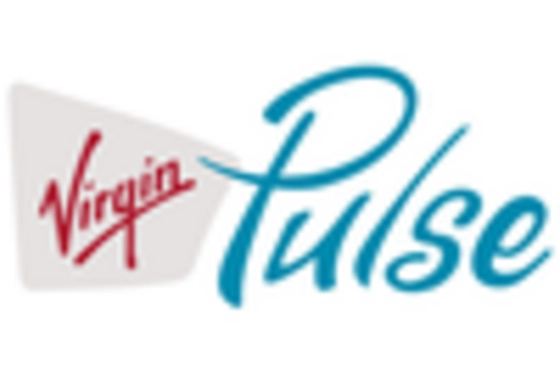Market Share
US Corporate Wellness Market Share Analysis
Corporate Wellness Market is a rapidly growing sector of the health industry, and companies are increasingly looking to capitalize on this opportunity. Market share positioning strategies are key to success in this sector, and there are a number of approaches businesses can take to increase their market share. One strategy is to focus on customer service and satisfaction, as this can help to build a loyal customer base. Another approach is to focus on product innovation and staying ahead of the competition, as this can also help to build a competitive edge. Companies can also use targeted marketing efforts to reach their desired audience and increase brand visibility.
In the dynamic landscape of the corporate wellness market, companies employ various strategies to secure a favorable market share positioning. One prevalent strategy involves differentiation, where companies aim to stand out by offering unique and innovative wellness solutions. By providing services that set them apart from competitors, such as personalized wellness plans, cutting-edge technologies, or specialized programs addressing specific health concerns, companies can carve a niche for themselves in the market. This differentiation strategy not only attracts clients but also helps in retaining them by meeting specific and diverse wellness needs.
Another essential aspect of market share positioning in the corporate wellness market is effective marketing and branding. Companies invest in creating a strong brand identity that communicates their commitment to employee well-being. This involves not only showcasing the features of their wellness programs but also emphasizing the positive impact on employee health and productivity. A well-executed marketing strategy helps build trust with clients and establishes a company as a leader in the corporate wellness space, influencing potential clients to choose their services over competitors.
Collaboration and partnerships are key strategies employed by companies to enhance their market share positioning. Forming alliances with other businesses, healthcare providers, or technology firms allows companies to broaden their offerings and reach a wider audience. For instance, partnering with fitness centers, healthcare professionals, or wearable technology companies can augment the scope and effectiveness of corporate wellness programs. Such collaborations can create comprehensive solutions that address various aspects of employee well-being, thereby attracting a larger client base.
Additionally, companies in the corporate wellness market often focus on customer satisfaction and engagement as part of their market share positioning strategy. Ensuring that clients are not only satisfied with the wellness programs but also actively engaged in utilizing the services contributes to positive word-of-mouth marketing and customer loyalty. Regularly seeking feedback, adapting programs based on client preferences, and maintaining a responsive customer support system are crucial elements of this strategy. Satisfied and engaged clients are more likely to continue and expand their partnership with a wellness provider, positively impacting the company's market share.

















Leave a Comment